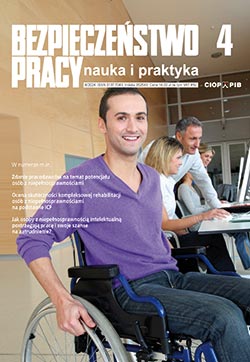Methods of protection against dust-air mixture explosion in the processing of grain
dr inż. MACIEJ CELIŃSKI, mgr inż. JAN PRZYBYSZ, dr inż. MONIKA BORUCKA, dr inż. KAMILA MIZERA, dr AGNIESZKA GAJEK
Explosive atmospheres are potential in agricultural processing plants. Dust generated during processes such as grinding, sieving or grain transport is a potential source of ignition and explosion in an industrial installation. Statistics show that the annual global grain production in 2019 exceeded 2.7 billion tonnes. This amount of dusty material significantly increases the risk of fire and/or explosion during production, transportation and processing. Due to the risk of explosion, plants dealing with the storage and processing of grain must have adequate protection mechanisms. The article below presents both explosion characteristics of the grain dust, most commonly used in Poland, and the types of explosion proofing most often used in industrial installations.
DOI: 10.54215/BP.2022.07.17.Celinski
Legal requirements for control of harmful biological agents in the light of related legislative changes in years 2000-2020
prof. dr hab. n. med. RAFAŁ L. GÓRNY, dr n. tech. MAŁGORZATA GOŁOFIT-SZYMCZAK
Legislation in the area of protection of workers against the risks related to harmful biological agents (HBA) exposure requires constant revision. The COVID-19 pandemic has forced further changes in this regard. In 2020, Commission Directive (EU) 2020/739 was published, amending among others Annex III to Directive 2000/54/EC as regards the inclusion of SARS-CoV-2 in the list of biological agents known to infect to humans. In the same year in Poland, a revised Ordinance of the Minister of Health was published, amending the regulation on HBA for health in the work environment and protection of the health of workers professionally exposed to these agents. This article discusses the legal requirements of HBA control in the light of the latest legislative changes and characterizes the problems in this area that still need to be solved at both the national and European level.
DOI: 10.54215/BP.2022.07.18.Gorny
Measurement of noise produced by sources close to an ear – on the example of headsets
dr inż. EMIL KOZŁOWSKI, dr inż. RAFAŁ MŁYŃSKI
The article presents the results of measurements of noise parameters generated by headsets. The results of direct measurement carried out using an acoustic manikin were corrected so that the obtained values corresponded to the free-field conditions and could be referred to the criterion values of noise exposure assessment in Poland. In case of A-weighted equivalent sound pressure level, the correction value was determined according to the normalized method. However, in case of A-weighted maximum sound pressure level and C-weighted peak sound pressure level the own method of determination of this correction was proposed. The results of measurements presented in the paper showed that for the tested headsets, at the specific settings of gain level, no exceedance of the noise exposure limit values occurred. However, it is possible that the action value may be exceeded for daily noise exposure level. Moreover, the measurements showed that the correction values for the A-weighted equivalent sound pressure level, A-weighted maximum sound pressure level and C-weighted peak sound pressure, regardless of the method of their determination, are similar to each other. However, the correction values depend on the headset, which was used to play the test signal.
DOI: 10.54215/BP.2022.07.19.Kozlowski




























